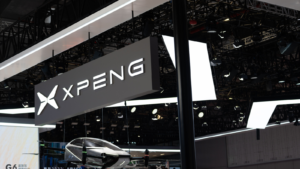3 Millionaire-Maker Hyper-Growth Stocks Poised to Surge Higher
As we near the end of 2023, it’s worth noting that this year has been more favorable for stocks than the previous one. However, several hyper-growth stocks have recently experienced a slowdown. Investors are navigating various uncertainties, including the possibility of a recession, elevated interest rates, and an upcoming presidential election. For those looking for potential millionaire-maker returns, now may be the time to consider these three hyper-growth stocks.
Shopify (SHOP)

Shopify (NYSE:SHOP) helps small businesses create online stores and connect with a global customer base. The company saw strong earnings growth in Q2 with $1.7 billion in revenue, up 31%, and $835 million in profits, up 27%.
However, it also reported a Q2 net loss of $1.3 billion due to restructuring costs from layoffs and selling its logistics business. Despite this, the company is rebounding, with SHOP stock rising 10% on a deal to offer Amazon’s (NASDAQ:AMZN) Buy with Prime program to its merchants. In the report, President Harley Finkelstein noted their focus on global expansion and improving free cash flow.
Shopify stock is rebounding nicely this year, with potential for strong quarterly results after the company divested a non-core business and appears to be refocusing on its core business. Additionally, key partnerships and strong long-term secular tailwinds supporting e-commerce provide investors with a long-term growth trajectory worth jumping on. I think Shopify is a great way to play the e-commerce space in the small and medium-sized enterprise niche.
Teladoc (TDOC)

Teladoc Health (NYSE:TDOC) is emerging as a strong healthcare stock despite the company’s stock price seeing a 10% drop over the past six months. The company’s most recent quarterly results showed a promising 10% revenue increase to $652.4 million, slightly beating predictions by 0.5%, giving strong reason for its investors to be optimistic.
Its partnership with Microsoft (NASDAQ:MSFT) to enhance clinical documentation using artificial intelligence (AI) is a significant move considering AI’s expected 11% share in healthcare budgets by 2024. Teladoc is making strategic decisions to stay competitive. Teladoc employs 60 proprietary AI models to enhance products and member experiences with optimized provider-patient matches, personalized content, and boosted efficiency.
BetterHelp, a Teladoc Health subsidiary, remains a dominant player in mental health services. Driven by high demand, its segment revenue grew impressively by 18% YoY. Stable customer acquisition costs and improved margins suggest sustainable growth.
Virtual care’s role is set to expand with employers planning increased spending on it for holistic care, and Teladoc aligns well with this trend, poised to capture a growing market.
XPeng (XPEV)

XPeng (NYSE:XPEV) is an electric vehicle (EV) manufacturer that has long emphasized the potential of flying cars that are operational on road and in the air. The successful test flight of the Voyager X2 signifies XPeng’s technological progress in electric air mobility, marking a significant milestone.
XPeng’s August vehicle deliveries soared 43% YoY to 13,690. The company is set to expand into France, Germany, and Britain by 2024. XPeng is collaborating with Volkswagen (OTCMKTS:VWAPY) on two mid-sized EVs for the Chinese market, with a $700 million investment from VW. Additionally, it acquired Didi Global’s smart electric car development business for $744 million, facilitating its entry into the mass market with lower-priced EVs and causing XPEV stock the surge.
These strategic initiatives position XPeng for competitive advantage despite ongoing losses. In Q2, it reported a $384.5 million loss, wider than expected, with $698 million in revenue. XPEV stock is priced at $18, up 80% year-to-date. Acquiring it now while it’s below $20 is a wise choice.
On the date of publication, Chris MacDonald did not have (either directly or indirectly) any positions in the securities mentioned in this article. The opinions expressed in this article are those of the writer, subject to the InvestorPlace.com Publishing Guidelines.

